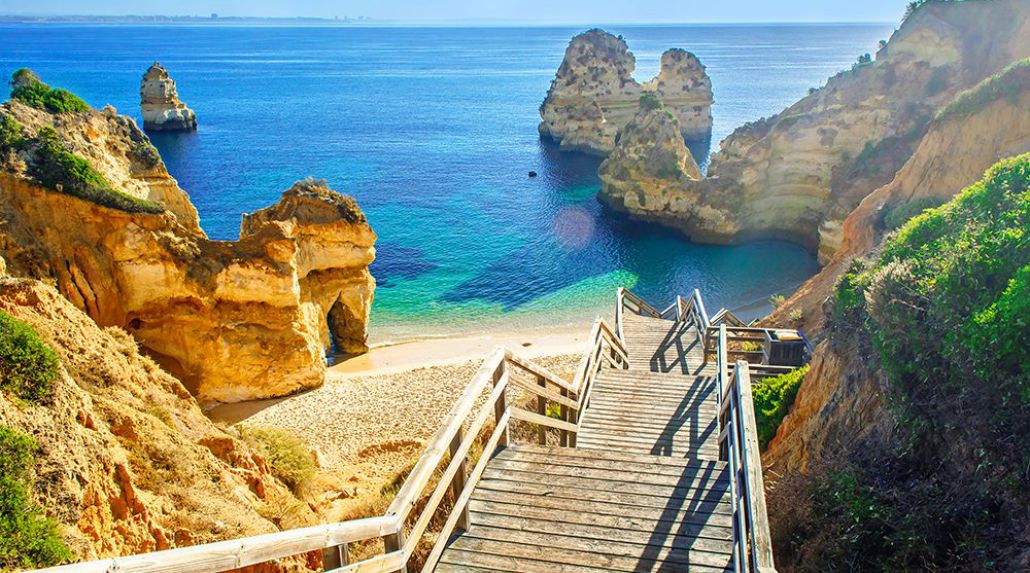
Along the Portuguese ‘Route 66’
June 08, 2020
Route 66 in Portugal? That’s right, the Estrada Nacional 2 runs north to south through one of Europe’s most charming destinations: Portugal. The route starts in Chaves on the Spanish border and snakes through the country along a 750 km trajectory that ends in the southern city of Faro.
The cradle of Portugal
The most practical starting point is Porto, the city that works according to the Portuguese, whereas Braga prays and Lisbon consumes. It is also the city of port wine as well as a place with unsuspected Belgian connections such as the monumental Ponte Luíz I or the adorable ‘os belgas’, the historic Belgian-made trams.
From Porto you have to travel north, via the historic cities of Braga and Guimarães. ‘Aqui nasceu Portugal’ is printed on the city walls of Guimarães. This is where Portugal was born and that has everything to do with the castle of the dukes of Bragança and the first king of Portugal, dom Alfonso I. Incidentally, Guimarães was the European cultural capital in 2012.
Straight down
Initially the Estrada leaves Chaves on a vertical trajectory due south: the first stops are Vila Real, famous for its Mateus wine, Viseu with its cathedral and Luso. From Luso it’s only a short hop to Coimbra. The university city atop the mountain is well worth visiting, if only for the impressive 18th century Joanina library or the old cathedral with its Flemish retable. Further north on the Atlantic coast is Aveiro, also known as the Venice of Portugal. Surprising city excursions include a round trip in a moliceiro, the local gondolas, or an architectural walk along the city’s fin-de-siècle and Art Nouveau buildings.
The next stage takes us from Coimbra, Leiria and Santarem to Sertã. From there you can visit Dornes, one of Portugal’s most picturesque villages on the Rio Zézere, or you can marvel at the famous Templar castle of Tomar, one of the many places in Portugal where flamenco artists gathered to practice their art.
Slow travel
The Estrada Nacional 2 is an ode to slow travel even though the heart of Portugal is criss-crossed by a fine maze of well-kept motorways. From Sertã we head towards the Spanish border and the lovely towns of Castelo Branco and Portalegre near the national park of São Mamede. En route to the cosy university city of Évora and the cork oaks that are so typical of the Alentejo region, the palace of the dukes of Bragança in Vila Viçosa is definitely an interesting stop. Évora itself boasts a rich history and a large student population that attends one of the world’s oldest universities.
And then we set off for the coast again: our route takes us to Setúbal, perhaps a somewhat underrated stop. We should mention the natural park of Arrábida with its picturesque bays or the wines of Azeitão but from here you can obviously also visit the city of seven hills: Lisbon. As such the Portuguese capital is certainly worth a visit but be sure to take the time to stroll along the streets and check out the highlights.
Off to the Algarve
Nestled in a wide bay, Setúbal is situated across from the glamorous Tróia peninsula and Comporta. You may even spot a pod of dolphins on the ferry ride.
The Alentejo region is gaining in popularity: the tranquillity and the rural atmosphere are key assets that are attracting growing numbers of vacationers. Amongst others, the region is investing in the development of cycle and hiking networks but you should also try the local wines and regional cuisine, in Beja for example.
Follow this N2 route all the way to the end in Faro and you’re in the heart of the Algarve, Portugal’s popular beach region. From Faro you can easily fly back.
Interested? Contact your UNIGLOBE agency
Back
